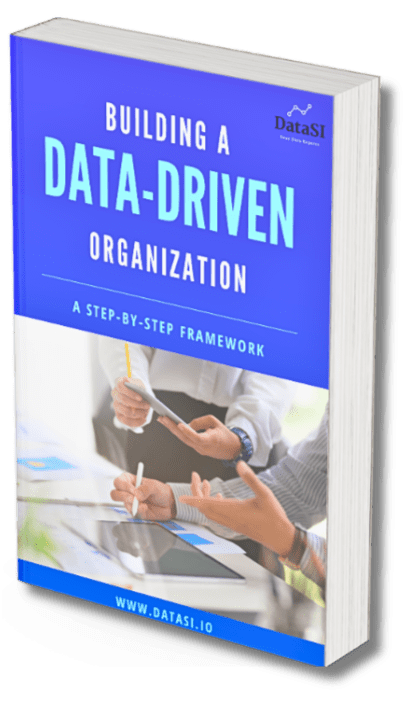In today’s fast-paced business landscape, data holds the key to informed decision-making and strategic growth for companies of all sizes.
Small businesses, often constrained by limited resources, may encounter greater challenges in the process of data utilization.
If you’re a small business owner looking to unlock the power of data, you’re in the right spot. By using the right tools and methods, you too can achieve data success.
Today, we want to bring you this comprehensive guide that will walk you through the essential steps of data collection, tailored to meet the unique needs of small businesses like yours.
Data Collection for Small Businesses: Before Collecting Data
Before embarking on data collection, there are a few crucial factors you need to consider to set the stage for success:
1. Defining Your Objectives
Before diving headfirst into data collection, it’s essential to establish clear business objectives. Are you aiming to enhance your customer experience, optimize your product offerings, or refine your marketing strategies? Define your goals to guide your data collection strategy.
2. Quality Over Quantity
For small businesses, focusing on quality data is paramount.
Companies suffer more losses from making decisions with inaccurate data. In fact, the cost of misusing data with poor quality can lead tomore than $12 millionloss in revenue for an enterprise per year!
Read more on What is Data Quality and How do you Collect Quality Data?
Identify the data points or metrics that directly impact your objectives. For instance, customer demographics, purchase behavior, and social media interactions are crucial for understanding your target audience.
3. Simplicity is Key
Incorporating data collection tools can be overwhelming. Thus, when choosing the right tool, always opt for user-friendly ones such as SurveyMonkey for customer feedback and Google Analytics for website traffic analysis. These tools offer accessible insights without the steep learning curve.
4. Transparent Data Practices
Ethical data collection is vital especially when small businesses thrive on trust.
Obtain explicit consent from customers before collecting their data. Clearly communicate the purpose of data collection, how it will be used, and the security measures in place to protect it.
5. Efficiency for Busy Entrepreneurs
Time is precious for small business owners. Automate routine tasks such as email campaigns and customer interactions with chatbots. Scheduled data pulls can save you hours of manual effort, allowing you to focus on growing your business.
6. Security in a Digital Age
Protecting collected data is non-negotiable. Utilize encryption, secure servers, and regular data backups to prevent breaches. By ensuring data security, you’re not only safeguarding your business but also earning the trust of your customers.
7. Unveiling Data Insights
Collecting data is just the beginning. You need to know how and what analytics tools you can utilize to uncover insights including customer trends, preferences, and behaviors. Transform raw data into actionable insights that shape your strategies.
8. Iterate, Adapt, Succeed
Data collection is an ongoing process. Regularly review your strategies and adjust your data collection methods based on outcomes. Adapting to insights ensures your business stays aligned with its goals.

Once you have the key factors in mind, let’s move on to the different methods of data collection.
There are mainly 3 types of data:
- First-party data – data collected directly by you or your organization
- Second-party data – data collected by other consumer-facing companies other than your organization.
- Third-party data – data collected by a third-party data provider which collects information across other companies’ websites, and apps.
In this article, we will primarily focus on how to collect first-party data.
Collecting First-party Data
First-party data are the data collected directly by you or your organization through conducting surveys, experiments, or other measuring devices.
First-party data is generally considered to be more valuable as this is the direct information about your customers, on how they react, behave, and think.
There are multiple ways to collect first-party data. You can collect yourself directly from your customers or through available tools in the market.
1. Asking Your Customers Directly
You can collect the contacts of your customers or customers’ personal data through your website, including names, emails, addresses, company names, and phone numbers, through sign-up forms or subscription forms.
A common method businesses use is to provide a free incentive or opt-in freebie with valuable information for potential customers in exchange for an email subscription, like the one below.
[mailerlite_form form_id=2]

People are generally willing to exchange their basic contact information and emails with benefits exchanged.
Psychologically, people think their email addresses are worth $10 to $20. This means that they’ll only be willing to exchange their email addresses if you offer something they’ll pay $10 to $20 for.

Other methods to collect data directly include questionnaires, surveys, interviews, or focused-group studies.
Questionnaires or surveys can be embedded in your website or distributed to your customers directly (in physical form or online surveys). You can collect quantitative data or qualitative data through surveys.
For instance, a descriptive question that requires the respondent to answer in detail is a qualitative survey.
On the other hand, a question that is to be answered with a numerical answer is a quantitative survey, such as asking about frequency, rating, liking, and so on. It’s more measurable compared to qualitative questions.
A good survey should combine both, so you can gain some deeper valuable insights from your customers, which can help you to better strategies and improve customer satisfaction based on their feedback.
The type of data you can collect with survey tools includes:
- Demographic information: Age, gender, income, education, and other personal characteristics of the survey participants.
- Attitudes and opinions: Participants’ views, opinions, and beliefs on various topics, such as brand perception, customer satisfaction, and product usage.
- Behaviors and habits: Information on how participants spend their time, what products they use, and how they make purchasing decisions.
- Perceptions and experiences: Participants’ experiences and perceptions of products, services, and events, including any issues or challenges they encountered.
- Preferences and priorities: Participants’ preferences and priorities in terms of products, services, and features they value most.
- Intentions and motivations: Participants’ future intentions, such as whether they plan to purchase a product or recommend it to others.
- Feedback and suggestions: Participants’ feedback and suggestions on products, services, and the survey process itself.
Some online platforms to create surveys include Qualtrics, SurveyMonkey, and Typeform.
One thing you need to be careful of when you are designing questionnaires or surveys is that you need to stay objective and not sway your customers’ opinions, or put your customers in a scenario where they don’t feel like expressing their true thoughts.
These will lead to your respondents not expressing their real thoughts and leading to bias in the data.
2. Interviews and Focused Group Studies
Interviews and focused group studies are two other ways for you to know your customers better through face-to-face conversation. Interviews are generally conducted on a one-to-one basis, while a focused group is facing a small group of audience who are representative of your target audience.

As you can ask deeper questions and also be able to clarify with the respondents face-to-face, these types of data collection allow you to get to know your customers better and more deeply. Some of the most valuable insights can be obtained through an interview or focused-group studies.
However, the limitation is that face-to-face conversation can, again, lead to bias.
Your interviewees’ answers may be biased toward what seems socially acceptable than being truthful. Thus, you should not only rely on asking your customers directly as the sole data collection means for your business.
It’s recommended to use a combination of other studies to understand your customer behavior better.
3. Tracking through Web Analytical Tools
There are many big data tools on the market that can facilitate data collection and analysis on your customers or business. Some of these tools do not require any budget or technical skills, which can come in handy for SMEs with tighter budgets.
Web analytical tools including Google Analytics or Adobe Analytics allow SME owners to track their customer’s online engagement data, including the users’ interaction with the company’s website and marketing effort.
It also allows tracking of behavior data, including what pages the users have visited and how long they stayed on the page. You can gain massive insights solely from Google Analytics to know if your online effort is working. Some insights include: What is your customer’s journey online and how is the navigation on your webpage?

It also provides a detailed breakdown of your website visitors based on their demographics, interests, and behaviors which you can tap into to understand who are the audience interested in your product and services.
If your business is running on an e-commerce platform such as Shopify, Magento (Now Adobe Commerce), or WooCommerce, these platforms also allow you to store data as soon as it’s generated, which can help you get to know your customer insights easily.
There are more third-party analytical tools available in the market nowadays. You can analyze your marketing efforts including email marketing efforts through different tracking tools and software.
From these tools, you are able to know what has worked and what has not. Taking email analytics as an example, you are able to know how your subscribers interact with your emails including whether they have opened the email, successfully received it, and conversion, which can help you to optimize and strategies your email campaigns for better performance.
4. Social Media Monitoring
If you are promoting your business on social media platforms such as Facebook, YouTube, and Instagram, these platforms also have analytics built in that can allow you to gain insights about your performance and interaction data.
Track mentions, comments, and interactions on social media platforms. This helps gauge customer sentiment and able to provides you with a direction for your product or marketing strategies.
5. Customer Relationship Management (CRM) Systems
There are also many CRM (Customer Relationship Management) software available in the market that collect data on customer interactions and transactions. These tools offer a consolidated view of your customer’s journey.
These tools can help you manage customer relationships, track sales, and improve customer satisfaction.
The type of data collected by CRM software typically includes:
- Contact information: Names, addresses, phone numbers, and email addresses of customers and prospects.
- Interaction history: Records of phone calls, emails, chats, and other interactions with customers.
- Sales data: Information on deals, quotes, and invoices, as well as sales pipelines and forecasting.
- Customer preferences and behavior: Data on what products or services customers have purchased, as well as their preferences and behaviors.
- Feedback and complaints: Records of customer feedback, comments, and complaints, as well as how they were resolved.
- Marketing campaign data: Data on the success of marketing campaigns, including open rates, click-through rates, and conversions.
- Demographic data: Information on the age, gender, income, and other demographic information of customers and prospects.
Some of the renowned CRM tools are Salesforce, HubSpot (biggest), and Pipedrive.
6. Point-of-Sale (POS) Systems
If you have a physical store, POS systems record sales, customer preferences, and inventory levels. This data aids in inventory management and product recommendations.
Data Collection for Small Businesses: After Collecting Data
In the data life cycle, data collection is only the beginning stage.

Once you start to collect some data, you need to handle the data, process them, and store them in a secured place, for efficient utilization and aid in your organization’s decision-making.
Depending on your storage and analytical needs, you may choose different tools to assist you in data management and analysis.
You may find the below resources useful:
- Company Intranet: A Simplified Data Management Solution for SMEs
- How to Choose the Right Business Intelligence Tools for My Business?
- Small Business Data Analytics: 6 Ways to Improve Your Decision-Making
- Big Data for Small Businesses: The Complete Guide
- Best Document Management Software for Small Business in 2023
At DataSI, our data experts specialize in helping small to medium enterprises like yours build an effective data strategy. We can save your worries while you can focus your precious time on strategies and making decisions based on data insights.

Talk to us today
Find out how we can help your business to build a successful data strategy.


